JUNE 23RD: CONFERENCE ON NEW APPROACHES TO HERITAGE ETHICS: INTERDISCIPLINARY CONVERSATIONS ON HERITAGE, CRIME, CONFLICT AND RIGHTS
SUMMARIES – Marcus DEAN and Petronela SPIRIDON
Introduction
The conference on ‘New Approaches to Heritage Ethics: Interdisciplinary Conversations on Heritage, Crime, Conflict and Rights’, organised by the Centre for Heritage with financial assistance from English Heritage, was held at the University of Kent on the 23rd and 24th June 2014.
The conference started with introductory remarks made by John Baldock, who highlighted the truly international nature of this conference with participants from Algeria, Cambodia, Egypt, France, Japan, South Africa, the UK and the USA. Sophia Labadi then introduced the aims of the conference: to consider crime, conflict and rights in relation to heritage in an interrelated and holistic manner, to identify novel approaches to understanding and conceptualizing each of these issues, as well as lay the groundwork for new practice.
MORNING SESSION ON ‘HERITAGE, ETHICS AND CRIME’. CHAIRED BY SOPHIE VIGNERON.
First Talk
Mark Harrison and Mike Harlow from English Heritage delivered a talk on Policing the past, protecting the future. Tackling crime and anti-social behaviour in the historic environment of England. Harrison explained the difficulties of enforcing heritage laws which are in place to prevent heritage crimes due to the split responsibility between local authorities, the police and English Heritage. In order to tackle this problem more effectively, a Heritage Crime Programme was created which seeks to raise awareness of heritage assets at national, regional and local levels, as well as provide the expertise required to protect them. He also explained that people must report incidents of vandalism on Heritage sites in order for the authorities to document the crimes and convict criminals. However, a main issue is that the public equate the severity of incidents in relation to a monument’s perceived financial value.
Second Talk
Janet ULPH from the University of Leicester addressed us on the Role of Museum Codes of Ethics in Combatting Heritage Crime. The main focus of her talk inquired whether ethical principles would be more effective then legislation in helping museums to avoid acquiring stolen or illegally imported objects. She explained that the code of ethics provided by the UK’s Museum Association is primarily comprised of laws and money laundering legislation, as opposed to issues of professional ethics. It is obviously beneficial to have laws in place, although they are not always effective when dealing with stolen goods, as it can be difficult to prove dishonesty.
A discussion then ensued regarding the limits of what people can and cannot do to heritage sites and objects if they are privately owned.
Third Talk
After a short break St John SIMPSON from the British Museum addressed the audience on the difficulties that Afghanistan currently faces in relation to its national heritage in his talk Stolen, saved, returned: collaboration between the British Museum, National Museum of Afghanistan, UK Border Force and other agencies in the successful return of antiquities to Kabul. In a country torn apart by conflict, violent regime changes, and foreign occupying forces, the preservation and conservation of heritage is rightly not the main priority for many. Nevertheless, through the cooperation of museums it is at least possible to conserve part of Afghanistan’s cultural heritage.
The signing of MoUs between the directors of the British Museum and the National Museum in Kabul in 2011 was an historic moment. The National Museum in Kabul, which had been destroyed by a rocket during the civil war in 1995, obtained many of its country’s historical artefacts through this collaboration with the British Museum. Nevertheless, damage to heritage sites due to conflict is not the sole cause for concern for Afghani heritage, as the looting and smuggling of valuable ancient sites has become rife in recent decades. Simpson stated that museums need a closer level of cooperation and collaboration through the signing of MoUs, as this can be a vital tool during periods of post conflict. He also states that museums should publish more as this it is through this medium that the public can gain the greatest benefit. Simpson insisted on the need for transparency when dealing with such heritage operations as it could provide a vital template for countries which fall victim to civil unrest in the future.
Fourth Talk
The fourth talk of the day was delivered by Christos TSIROGIANNIS from the University of Glasgow, entitled Looted, smuggled and stolen antiquities identified in auction houses: what have we learned in the last eight years? in which he asked probing questions into the role and potential complicity of museums, collectors and auction houses in the trade of stolen antiquities.
Tsirogiannis provided a historical background regarding the efforts made by Greek and Italian authorities in their attempt to tackle the illicit trade of artefacts. Raids were carried out at various warehouses in Switzerland, owned by notorious art collectors such as Giacomo Medici, Gianfranco Becchina and Symes-Michaelides between 1995 and 2008, in which vital archives were confiscated. With the help of the seized documents, the authorities were able to identify multiple artefacts now located in museums. Nevertheless, Tsirogiannis highlighted that in recent years, various artefacts which were listed in these archives, have appeared with dubious collection histories in prestigious auction houses in London and New York such as Christie’s and Sotheby’s. This is particularly concerning as many artefacts are sold, even when the objects’ illegal provenance is known, although Tsirogiannis did acknowledge that some illegal items are withdrawn. He states new laws should be established in order to prevent these crimes.
Fifth Talk
Stuart CAMPBELL, in his talk Treasure Trove Unit on Good Intentions and Bad Practice; conflicting values in heritage protection, highlighted that many heritage crimes are committed by otherwise law-abiding citizens due to different cultural perceptions of what is acceptable behaviour regarding heritage. Many metal-detectorists, as well as history and archaeology enthusiasts, unwittingly commit heritage crimes as they collect what they deem to be ‘low-profile’ artefacts without reporting the discovery to the authorities. The public perception of the severity of heritage crimes is often associated with the perceived monetary value of the artefact, without taking into account that smaller, more insignificant finds can also transform the interpretive value of the archaeological record. Campbell’s talk raised the difficulties of tackling this ‘grey’ area, where bad practices or carelessness can easily, and often unknowingly, slide into the realm of criminal behaviour. This is obviously problematic as not reporting a discovery is considered a passive crime, which is linked with personal morals and ethics. He highlighted the importance of educating the public on heritage matters, as it can be difficult to implement certain heritage laws, and it is not always effective to use the strength of the law on unintentional crimes.
After these talks a lively discussion ensued as a Christie’s employee challenged some of Tsirogiannis’ statements. Both parties made some valid points pertaining to the manner in which artefacts are catalogued at Christie’s. The discussion later progressed on to the cultural value of small and often deemed ‘worthless’ artefacts.
AFTERNOON SESSION ON ‘ENGAGING STAKEHOLDERS?’. CHAIRED BY MARK HARRISON
First Talk
Trudy PRESCOTT started the session by a series of case studies regarding the deliberate vandalism and destruction of historically significant buildings and monuments in the city of Westminster, London. Her experience as a Metropolitan Police Officer and an art historian provided a unique insight into the challenges that Westminster’s heritage faces on a daily basis. Prescott reflected that more effort should be made to understand these acts of vandalism, as the motivations for such attacks vary from the racially motivated to student street protests. She questioned how threats of vandalism can be reduced and how the number of ‘capable guardians’ can be increased through volunteering and reporting crimes of vandalism. She concluded by analysing the factors that affected police response, and whether the perceived ‘harm’ affected the prosecution for the offences and the final sentences.
Second Talk
Andrew RICHARDSON continued along a similar theme, as he highlighted the importance of volunteer involvement at a local level as Police Support Volunteers (PSV’s), as they can provide valuable help in the prevention and investigation of all forms of heritage – related crime and anti – social behaviour. Richardson demonstrated the valuable support that specialist volunteers can bring to the police force with regard to heritage crimes through a series of case studies which involved the investigation of crime scenes and suspects’ properties, assisting in the interviewing of suspects, as well as assisting in the formulation of impact statements used in court.
The discussion session was marked by questions regarding the limits of police and police support volunteers’ intervention in heritage crimes, the rehabilitation programs for delinquents and their potential punishments and the impact that contact with professionals in the field can bring to people with a tendency to commit heritage crimes.
Third Talk
Lama FOUAD and Yomna BORG presented a very different point of view regarding the appreciation of cultural heritage where the interplay of varying factors included socioeconomic statuses, political associations, business interests and cultural contexts. These contradictory perceptions of heritage are particularly evident in Alexandria, a city which struggles to emphasise the importance of its urban heritage, as it is neglected by the government and its people alike. As result over 30 listed buildings have been demolished in the past three years with little or no consequences.
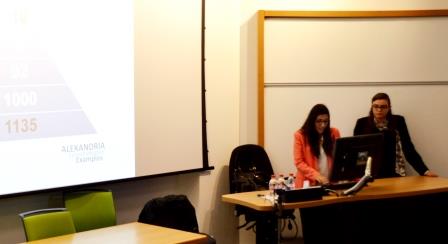
They presented a case study concerning the different public perceptions of Alexandria’s urban heritage, sampling with three buildings, of different listing category (national, city and locals levels). At the end of presentation they also highlighted that the dramatic situation of Alexandria urban heritage cannot be altered with the involvement of the young people because there is not easy internet access in many parts of Egypt, and all media outlets are controlled by the government.
Fourth Talk and Keynote Address
The first day of the conference concluded with the KEYNOTE speaker: Anne LEMAISTRE, Head of the UNESCO Office in Cambodia, who was introduced by David Nightingale. Lemaistre provided a riveting account of a 10th-century sculpture, called Duryodhana. Here is a brief description of the sculpture’s recent history.
Duryodhana was originally located in at Prasat Chen, a thousand-year-old temple situated in Northern Cambodia, although it disappeared along with other statues when the temple was looted. Many of the sculptures formed part of pictural narratives such as Mahabharata and Ramayana. However, six of the missing statues reappeared in the United States. These sculptures were traced when the Cambodian authorities, advised by UNESCO and EFEO, stopped the sale of a major sculpture, called Duryodhana, a 10th-century sculpture, at Sotheby’s New York in March 2011, as the empty pedestal of the statue was found at Prasat Chen at the Koh Ker site. Following Cambodia’s complaint, the Duryodhana was withdrawn from the auction immediately and was later the subject of a federal court case in New York on Cambodia’s behalf. Sotheby’s officials said its owner acquired the sculpture legally. Nevertheless, the Cambodian Authorities and EFEO carried out further archaeological excavations in August 2012 at the Prasat Chen temple in the Koh Ker site during which 7 other pedestals appeared.
In June 2013, the Metropolitan Museum took the decision to repatriate two Pandava statues that had been donated to the Museum’s collection some decades previously. Following the Metropolitan’s ethical gesture, the Director General of UNESCO and the Cambodian authorities made an appeal to other museums to return artefacts from the Koh Kerr temple, and encouraged museums, actors from the art market and art collectors to adopt the same responsible and ethical behaviour. Sotheby’s said it does not believe the Met’s decision will affect its case. Yet, in June 2014, it repatriated the Duryodhana to Cambodia.At the same time, Duryodhana’s sparring partner, the Bhima statue, was voluntarily returned by the Norton Simon Museum in California and one of six onlookers to the Duryodhana and Bhima’s epic battle, the Balarama statue was given to Cambodia as a gift from Christie’s.
Both the presentation and discussion after also focused on the role of the UNESCO 1970 Convention and the impact of the US’ assistance to Cambodia in terms of diplomatic relations.

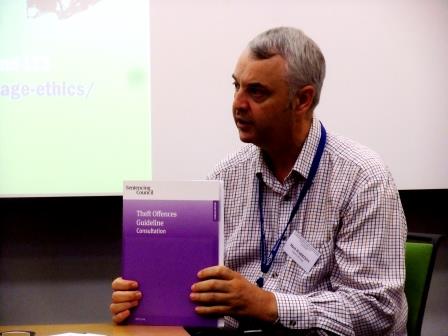

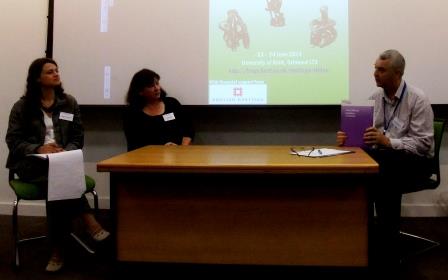
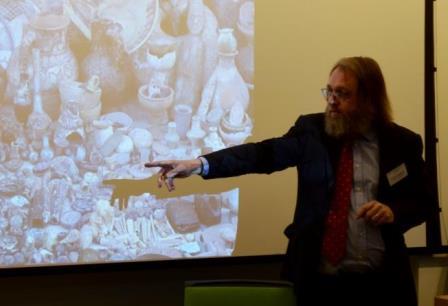

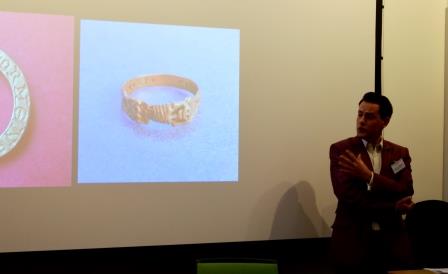


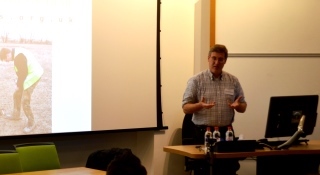
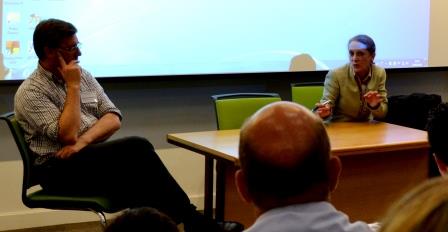

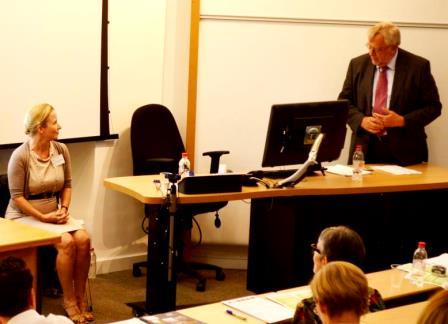

Recent Comments